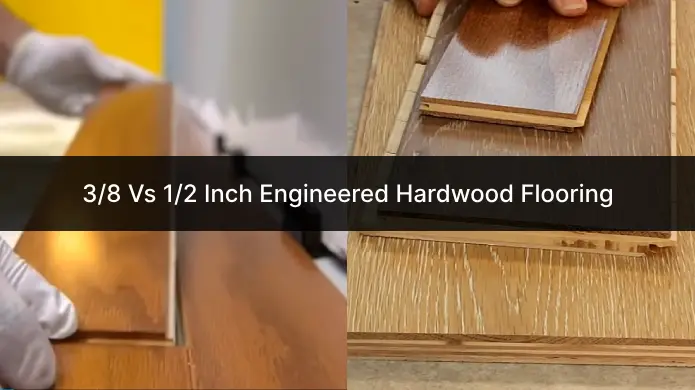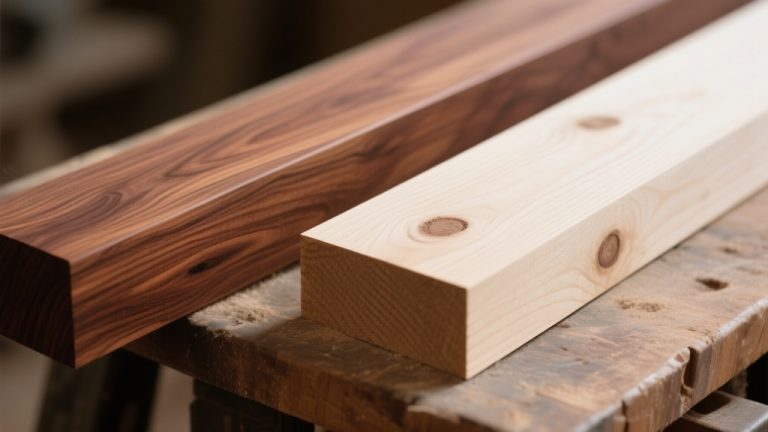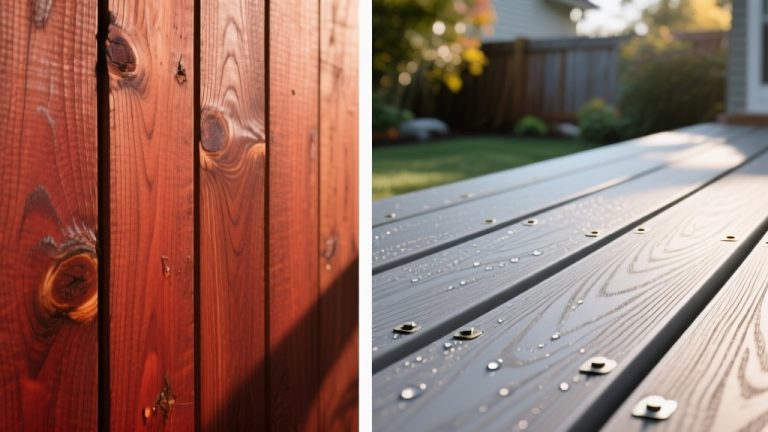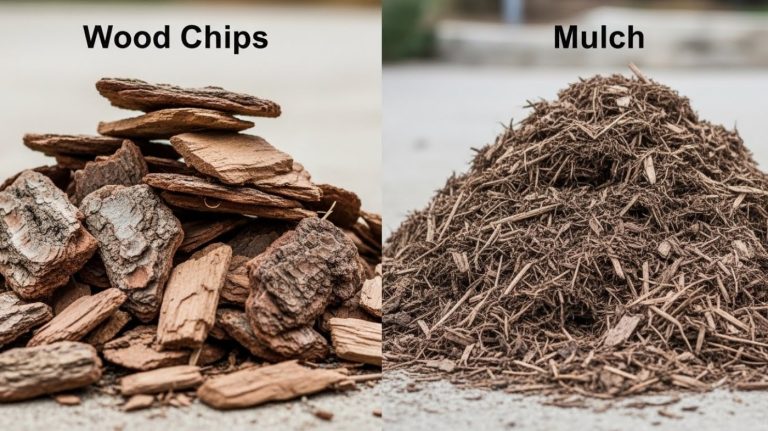3/8 Vs 1/2 Inch Engineered Hardwood Flooring: 7 Major Differences
Are you in the market for new hardwood flooring but feel overwhelmed by the various thickness options? Choosing 3/8 or 1/2 inch engineered hardwood flooring can be a difficult decision, but understanding the differences between the two can help you make an informed choice.
3/8 inch engineered hardwood flooring consists of a thin top layer of real wood (made up of multiple layers) bonded to a plywood core. On the other hand, 1/2 inch engineered hardwood floors have thicker layers that offer extra stability and are better suited to areas with heavy traffic or high levels of moisture.
Here, we will discuss the benefits and drawbacks of each thickness to help you decide which one is right for your home. So, let’s dive in and discover the differences between 3/8 and 1/2 inch engineered hardwood flooring.
The Differences Between 3/8 vs 1/2 Inch Engineered Hardwood Flooring

As a general rule, the thicker the top layer of a flooring product is, the more wear and tear it can handle. Here are some of the differences between 3/8 and 1/2 inch engineered hardwood flooring:
- No 01: Durability
- No 02: Stability
- No 03: Installation
- No 04: Resistance to Warping
- No 05: Moisture Resistance
- No 06: Sanding and Refinishing
- No 07: Cost
No 01: Durability
Surprisingly, opting for the thinner 3/8 inch engineered hardwood flooring may not be the wisest choice if you’re hoping for long-lasting durability. Thicker flooring tends to be more durable, and this is especially true in the case of engineered hardwood.
The extra thickness of 1/2 inch engineered hardwood flooring provides better resistance to wear and impact, making it a better choice for high-traffic areas or homes with pets and children. The durability of 1/2 inch engineered hardwood flooring is due to its thicker wear layer.
This layer is the topmost layer of the floor that is designed to withstand the daily wear and tear of foot traffic, furniture, and other impacts. A thicker wear layer means that the flooring can be sanded down and refinished multiple times, extending the life of your floor.
No 02: Stability
Thicker floors offer a solid foundation that can withstand changes in humidity levels, creating a stable and secure base for your home. This is particularly important if you live in an area with high humidity or if you have a house with a lot of foot traffic.
A 1/2 inch engineered hardwood flooring is considered more stable than 3/8 inch flooring, as it is thicker and more durable. Here are a few reasons why:
- Thicker floors are less likely to warp or buckle, even in areas with fluctuating humidity levels. This means that your flooring will remain level and smooth, even in the hottest summer months or the coldest winter days.
- By installing thicker floors in your home, you can reduce your energy bills and regulate the temperature. This is because they are better able to trap heat and prevent it from escaping, keeping your home warmer in the winter and cooler in the summer.
- Over time, thicker floors will last longer and require less maintenance as they are more resistant to wear and tear. This is especially important in high traffic areas like hallways and living rooms, where your floors are more likely to experience heavy foot traffic and other types of wear and tear.
No 03: Installation
To install your new 1/2 inch engineered hardwood flooring, you have two main options: gluing or floating.
Gluing involves applying an adhesive directly to the subfloor and then laying the flooring on top, while floating involves laying the flooring over a thin foam underlayment and allowing the planks to interlock with each other.
Both methods have their pros and cons, so it’s important to consider your specific needs before deciding which one to use.
In contrast, floating is generally faster and easier to install, but may not be as stable in the long run.
3/8 inch flooring often requires nailing. This involves pre-drilling holes and using a flooring nailer to secure the planks to the subfloor. Nailing is usually more labor-intensive than gluing or floating, but it provides superior stability and longevity in areas that are likely to experience heavy traffic.
No 04: Resistance to Warping
Installing 1/2 inch hardwood floors using the gluing method can create a strong bond between the subfloor and planks, potentially reducing the risk of warping in humid conditions. This is because the glue acts as a barrier between the wood and any moisture that may seep through.
This method is also helpful when installing in areas that experience high foot traffic or heavy furniture, as the glue helps to reinforce the planks and prevent any movement that may cause warping. Therefore, 1/2 inch flooring may be more resistant to warping than 3/8 inch flooring.
No 05: Moisture Resistance
You’ll appreciate the peace of mind that comes with knowing your hardwood floors can withstand moisture damage in high-humidity environments. Thicker engineered hardwood flooring, such as 1/2 inch, offers better moisture resistance compared to 3/8 inch flooring due to its additional thickness.
- The thicker wear layer of 1/2 inch flooring provides a stronger barrier against moisture penetration, preventing the wood from absorbing excess water and swelling.
- By providing greater stability and reducing the risk of warping or buckling, engineered hardwood floors help prevent moisture damage.
- Thicker flooring may also feature better moisture-resistant finishes, such as aluminum oxide or ceramic coatings, which provide added protection against moisture damage.
- In areas prone to high humidity or moisture, such as basements, bathrooms, or kitchens, 1/2 inch engineered hardwood flooring is a more suitable choice for its superior moisture resistance and durability.
No 06: Sanding and Refinishing

Imagine the feeling of being able to restore the beauty of your worn out floors without having to replace them entirely. With a thicker wear layer, sanding and refinishing your hardwood floors becomes a breeze, giving them a new lease on life.
1/2 inch engineered hardwood flooring is a great option for those who want the ability to sand and refinish their floors. The thicker wear layer allows for multiple sanding and refinishing sessions without compromising the integrity of the hardwood.
When it comes to refinishing 3/8 inch engineered hardwood flooring, the wear layer is not thick enough to withstand multiple sanding and refinishing sessions.
The flooring will need to be completely replaced once the top layer has been sanded down enough to compromise the tongue and groove connections.
No 07: Cost
Thicker flooring often comes at a higher price point compared to thinner options. This means that 1/2 inch engineered hardwood flooring may be more expensive than 3/8 inch flooring.
When considering the cost, weighing the benefits of thicker flooring against the added expense is important.
Thicker flooring typically has a longer lifespan and can withstand heavier foot traffic and wear and tear. Additionally, thicker flooring can provide better sound insulation and may be more comfortable to walk on.
However, if cost is a major concern, 3/8 inch flooring may be a more budget-friendly option that still provides the beauty and durability of engineered hardwood.
Comparison Table between 3/8 and 1/2 Inch Engineered Hardwood Flooring
| Criteria | 3/8 inch Engineered Hardwood Flooring | 1/2 inch Engineered Hardwood Flooring |
| Installation Method | Nailing | Gluing or floating |
| Resistance to Warping | More prone to warping | Less prone to warping |
| Sanding and Refinishing | Limited ability for sanding | Suitable for sanding and refinishing |
| Foot Traffic Suitability | Suitable for lighter foot traffic | Suitable for heavier foot traffic |
| Height Variation | Smaller height profile | Taller height profile |
| Moisture Resistance | Less resistant to moisture | More resistant to moisture |
| Availability | Commonly available | Availability may vary |
| Design Flexibility | More versatile in design options | Slightly limited in design options |
Can 3/8 inch engineered hardwood flooring withstand heavy foot traffic?
If you expect heavy foot traffic, 3/8 inch engineered hardwood flooring may not be as durable as its 1/2 inch counterpart. While 3/8 inch flooring can handle moderate foot traffic, it may not withstand the wear and tear of high-traffic areas.
The thickness of the flooring plays a significant role in its ability to withstand the weight of foot traffic.
Is a thicker engineered wood floor better?
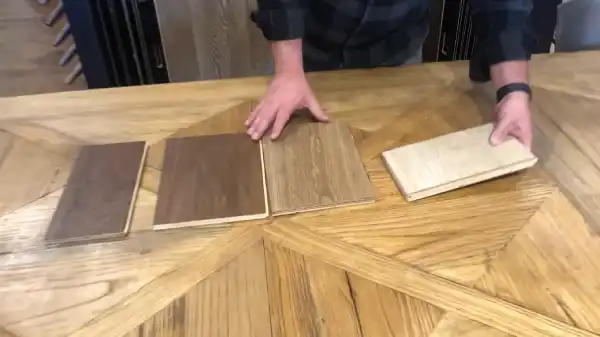
Thicker engineered wood floors offer a longer lifespan and improved sound insulation, making them a great investment for any home. A floor’s wear layer thickness determines how many times it can be redone.
A thicker wear layer means that your floors will last longer, and you can re-sand and re-varnish them more frequently than thinner engineered wood floors.
But the benefits of thicker engineered wood floors continue beyond there. They also offer improved sound insulation and better bridging of subfloor imperfections. This means that you can enjoy softer footfalls and reduced sound migration, making your home a quieter and more comfortable place to be.
3/8 or 1/2 Inch Engineered Hardwood Flooring: A Wise Investment for Your Home
Selecting between 3/8 and 1/2 inch engineered hardwood flooring comes down to your personal requirements. Each type has its advantages and disadvantages, and it’s critical to weigh them systematically before arriving at a decision.
If you seek an economical choice that can tolerate light to moderate foot traffic, then 3/8-inch engineered hardwood flooring might be the right choice.
On the other hand, if you want a robust and long-lasting option that can endure heavy foot traffic and can be sanded and refinished many times, then 1/2 inch engineered hardwood flooring may be a better fit.
Your preferred flooring type can profoundly affect the appearance and ambiance of your home. Therefore, it’s imperative to make an informed decision by considering critical factors like the flooring’s thickness, durability, and level of foot traffic.So, take the time to evaluate your options carefully and choose wisely. Remember, picking the right flooring can significantly impact the overall comfort of your space, making it a welcoming and inviting environment for you and your loved ones.

